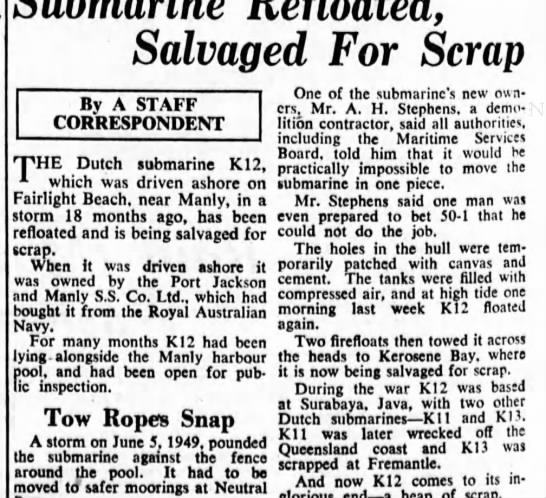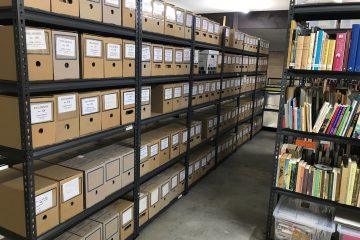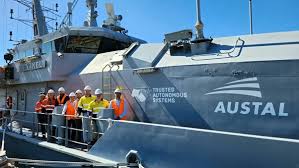The wartime story of the Dutch submarine HNLMS K-XII is reasonably well known among naval historians, but its Australian afterlife is one of the most unusual episodes in Dutch–Australian maritime history. Few Allied submarines ended their days as a tourist attraction at Luna Park or as a playground for children on the shores of Manly. Yet this is precisely how K-XII spent the final years of its existence.
From Java to Fremantle
Launched in Rotterdam in 1924 and commissioned the following year, K-XII belonged to the Dutch Kolonie-class, designed specifically for operations in the Netherlands East Indies. After a 12-week voyage from Europe, it joined the Dutch submarine force at Surabaya.
Following the outbreak of the Pacific War in December 1941, the submarine came under British operational control and was soon involved in combat. In the first weeks of the war it successfully attacked Japanese shipping, sinking the freighter Toru Maru and the tanker Taizan Maru. On Christmas Day it rescued the crew of a downed British Catalina flying boat, an episode fondly remembered in wartime accounts.
As the Japanese advance tightened around Java in early 1942, K-XII escaped to Fremantle, arriving on 20 March. There it undertook patrols for the Dutch intelligence service NEFIS, including operations to land agents on the Javanese coast. By mid-1943 the ageing submarine was no longer fit for frontline service and was assigned to the Admiralty’s Anti-Submarine Division for ASDIC training. This work further weakened the vessel’s structure and systems.
In March 1944 K-XII sailed from Fremantle to Sydney to await decommissioning. In September it was formally struck from the Royal Netherlands Navy list.
A submarine at Luna Park

Rather than being scrapped immediately, K-XII embarked on an unexpectedly colourful chapter in its life. A group of Australian businessmen purchased the vessel, seeing potential as a post-war novelty attraction. From late 1945 the submarine was moored beside Luna Park in Sydney, where visitors could pay a small fee to descend inside, look through the periscope and explore the engine room.
Sydney was experiencing power shortages at the time, and the submarine’s surviving engine and generator were used to help supply lighting to Luna Park. Dutch naval machinery thus kept an Australian amusement park running at night—an improbable but true footnote in post-war history.
In 1946 the owners arranged for K-XII to be moved across the harbour and berthed beside the Manly harbour pool. As described in John Morcombe’s 2016 article in the Manly Daily, residents and tourists could reach the submarine by walking along a special jetty, turning it into one of the most unusual public attractions Manly had ever seen.
Shipwreck at Fairlight
Manly Cove is exposed to heavy southerly weather, and K-XII repeatedly collided with its moorings. When a severe storm struck in early June 1949, the owners attempted to move the submarine to safety. The towline snapped and the vessel drifted helplessly onto the rocks at Fairlight, where it became firmly wedged.
Attempts to free it failed. At one stage a salvage barge was also washed onto the rocks. While the authorities regarded the stranded submarine as a nuisance, local children saw something else entirely: a genuine wartime submarine to climb over and explore.
A long farewell
In early 1950 a new syndicate purchased the stranded vessel with the intention of removing it intact and scrapping it profitably. They began by stripping the submarine of weight: batteries, motors, floor plates and internal fittings were hauled ashore using rigging strung from the deck gun to the shoreline. After 18 months of effort, K-XII was refloated in January 1951 and towed to Balls Head Bay to begin demolition.
The process was slow and repeatedly disrupted. At one point vandals removed plugs from the hull while it was beached in the Parramatta River, causing the submarine to sink again and delaying work for months. Using underwater cutting gear and explosives, workers gradually reduced the hull to pieces. The final remnants were not removed until 1961, ten years after the salvage attempt began. Much of the recovered metal was ultimately sold as scrap to Japan, a final ironic twist for a vessel that had once fought Japanese shipping.
A Dutch–Australian story worth remembering
The life of HNLMS K-XII spans the colonial Dutch East Indies, the Pacific War, and the post-war history of Sydney. From wartime patrols and intelligence missions to Luna Park attraction, shipwreck and slow demolition, the submarine’s Australian story is unlike that of any other Allied vessel.
Thanks to contemporary newspaper accounts and later work by historians such as John Morcombe ( July 28th, 2016, edition of the Manly Daily), the remarkable afterlife of K-XII remains part of Sydney’s maritime memory and an important chapter in the broader Dutch–Australian wartime narrative.
Click here for an extensive history of the Dutch Submarines operating from Australia during WWII


